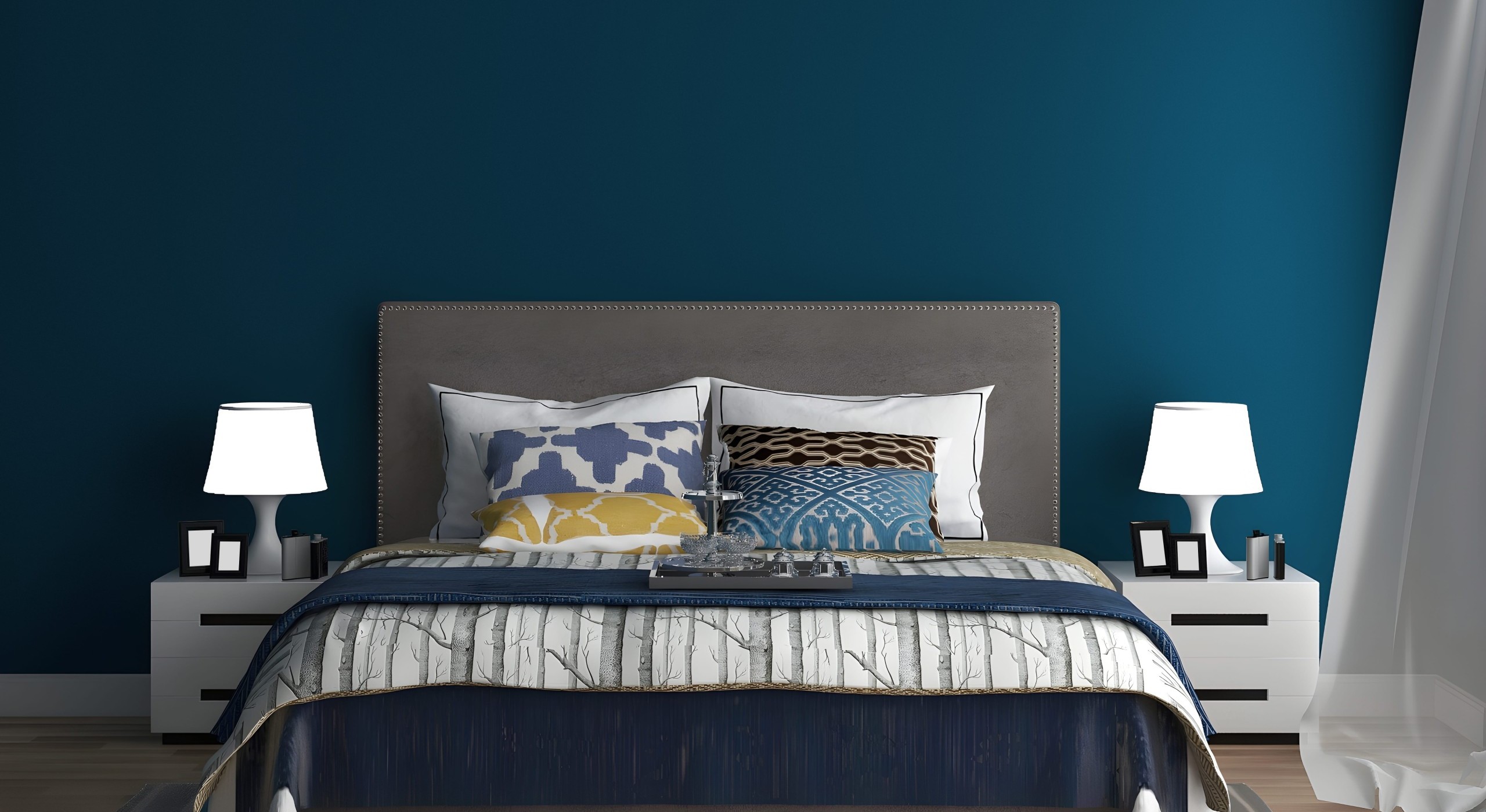
After giving your home a fresh coat of paint, you might be tempted to enjoy the space immediately. However, a common concern can arise: is sleeping in a freshly painted room safe? While a freshly painted room can look and feel rejuvenating, understanding the potential risks associated with paint fumes and ensuring a safe environment is essential.
In this blog, we’ll explore what you need to know before sleeping in a newly painted room, provide practical safety tips, and highlight how the choice of paint plays a crucial role in the process.
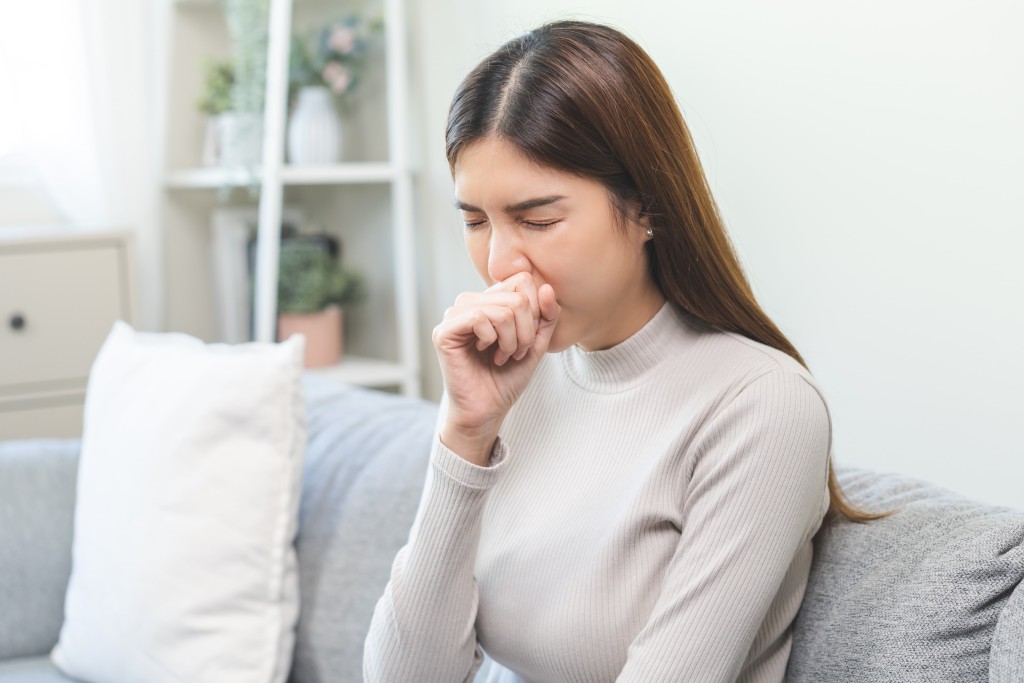
The Health Risks of Sleeping in a Freshly Painted Room
Fresh paint often brings with it that distinct ‘new paint’ smell, which many find unpleasant and even worrisome. Volatile organic compounds (VOCs) found in many traditional paints cause the typical paint smell. VOCs are chemicals that can evaporate into the air and have the potential to cause health problems when inhaled in significant amounts.
Some of the common short-term symptoms people experience with high exposure include:
- Headaches
- Dizziness or light-headedness
- Nausea
- Irritated eyes, nose, or throat
These effects are often more pronounced when sleeping in a freshly painted room because you’re in the same enclosed space for an extended period, often with reduced airflow. Long-term exposure to VOCs, especially in higher concentrations, can contribute to more serious health issues, including respiratory problems and other chronic conditions. This is especially concerning for vulnerable individuals like children, pregnant women, and those with respiratory sensitivities.
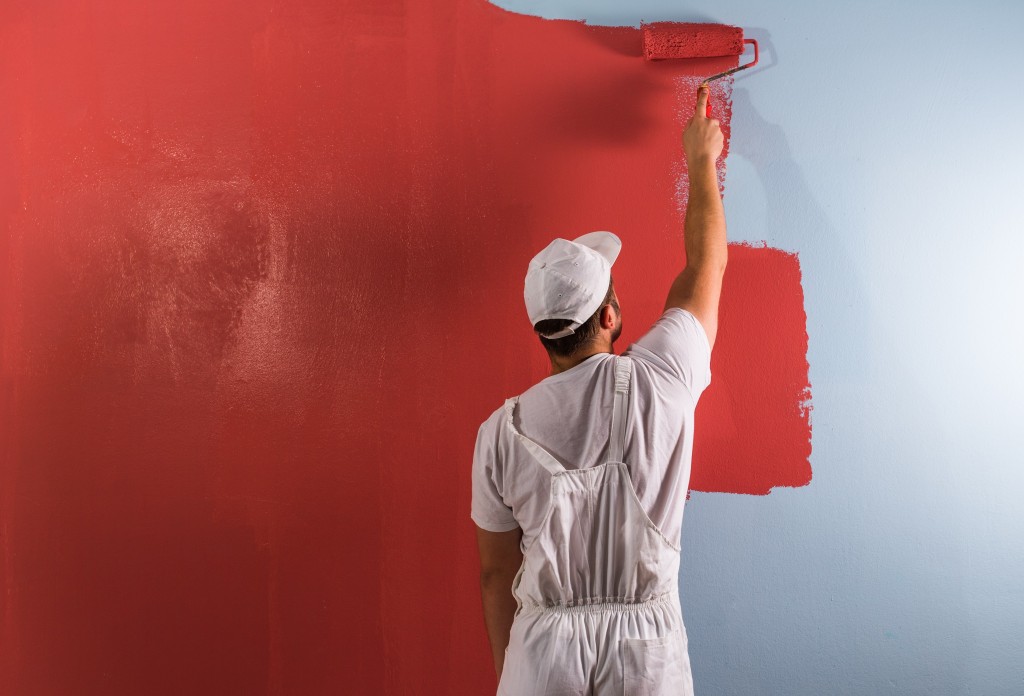
How Long Should You Be Waiting
So, how long should you wait before sleeping in a freshly painted room? The answer depends on several factors, such as the type of paint used, the size of the room, and the ventilation quality during and after painting.
As a general rule of thumb:
With standard paint:
It’s best to wait at least 2–3 days before sleeping in a room painted with traditional, high-VOC paints. This allows the majority of the fumes to dissipate and reduces the risk of exposure.
With low-VOC or no-VOC paints:
The waiting period can be significantly reduced. In some cases, you might be able to sleep in the room after just 24 hours, depending on ventilation. However, it’s always a good idea to err on the side of caution.
Ensuring good ventilation is key to speeding up the drying process and minimising exposure to any lingering fumes.

Types of Paints and Their Safety Considerations
The type of paint you choose for interior painting plays a significant role in the safety and comfort of your living space after painting. While traditional paints tend to have higher levels of VOCs, modern formulations now include low-VOC and no-VOC options that are much safer for indoor use.
Traditional Paints:
These paints often contain a higher concentration of VOCs, which can take longer to dissipate. As mentioned earlier, rooms painted with traditional paints typically require a longer airing-out period.
Low-VOC Paints:
Low-VOC paints have significantly reduced levels of harmful chemicals. This makes them a much safer option for residential use, especially in spaces where people spend a lot of time, such as bedrooms.
No-VOC or Eco-Friendly Paints:
These paints contain little to no VOCs, making them the safest choice for your home. Many eco-conscious homeowners opt for these paints to minimise the health risks associated with exposure to chemicals. They are particularly ideal for nurseries, bedrooms, and living areas where safety is a priority.
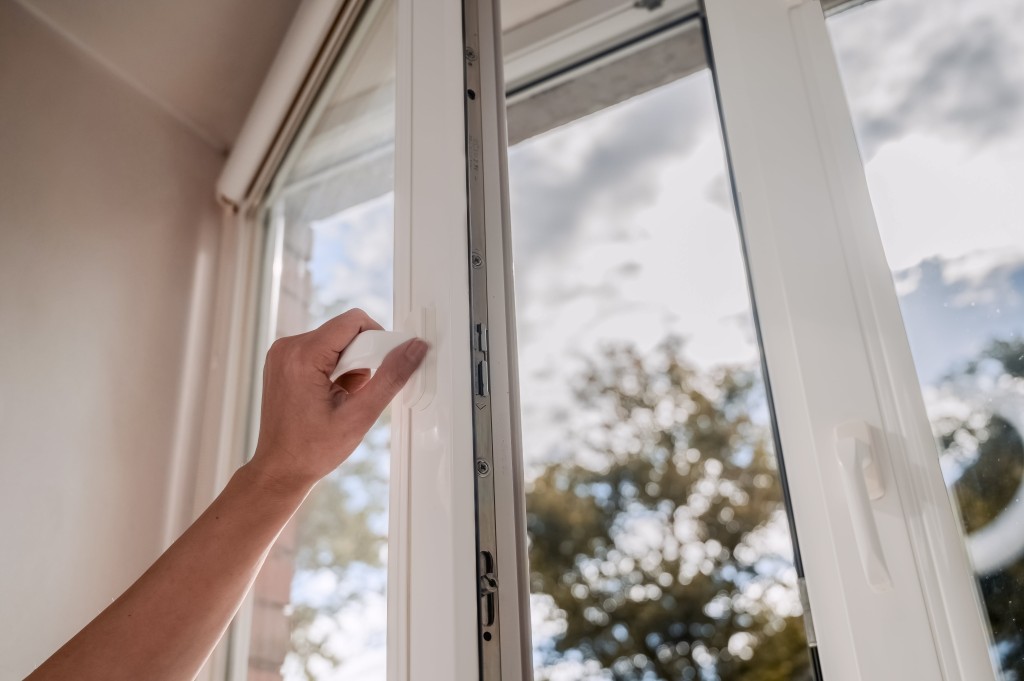
Best Practices for Ventilating a Room After Painting
Ventilating a freshly painted room is critical to reducing the risks of paint fumes. Proper ventilation helps circulate the air, allowing paint odours and VOCs to disperse more quickly. Here are some best practices for effectively ventilating a room after painting:
Open Windows and Doors:
Keep windows and doors open to allow fresh air to flow through the room. This will help flush out the fumes and replace them with clean air.
Use Fans:
If possible, use fans to enhance air circulation. Placing fans near open windows can create a cross-breeze that speeds up the drying process and disperses any remaining fumes.
Leave the Room Unoccupied:
Avoid spending unnecessary time in the freshly painted room, particularly in the first 24–48 hours. This is especially important for children, pets, and those with respiratory sensitivities.Consider Air Purifiers :
If the room has poor ventilation or if the weather doesn’t allow you to keep windows open for long, using an air purifier with a HEPA filter can help remove some of the paint fumes.
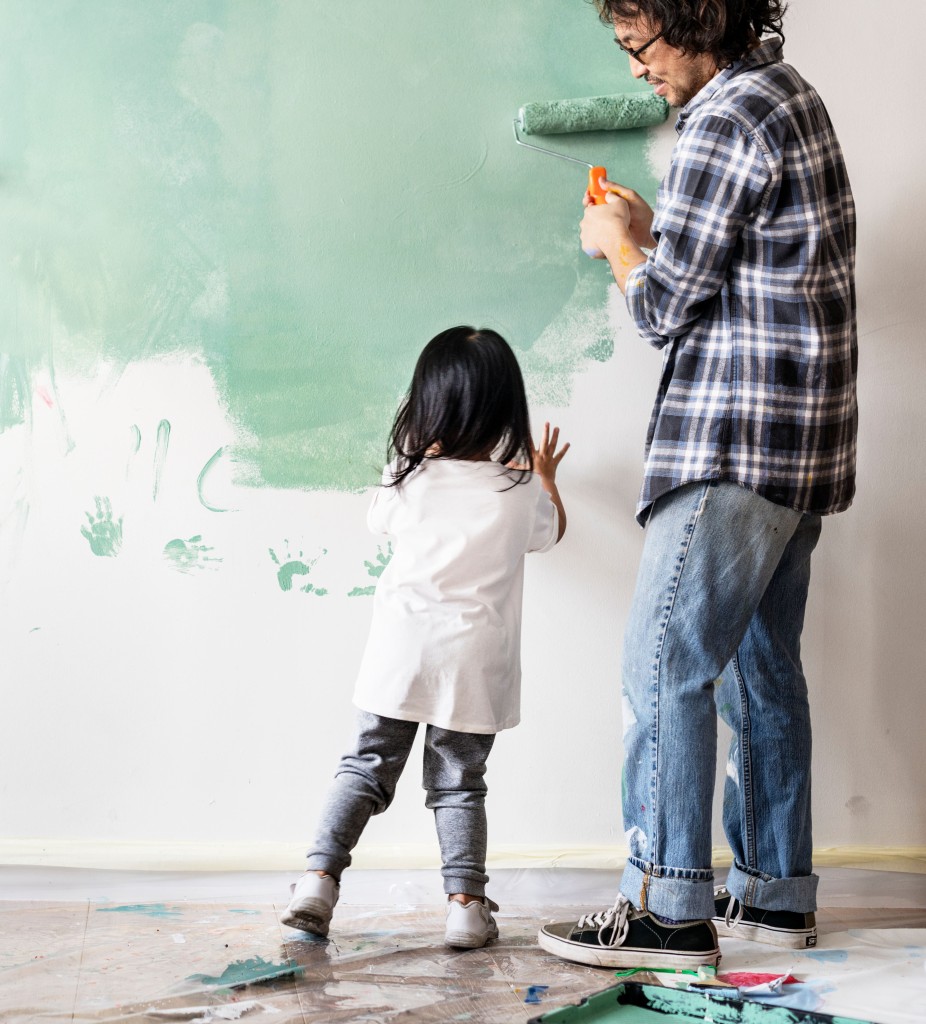
When to Take Extra Precautions
While most people will be fine with proper ventilation and the right paint choice, certain groups should take extra precautions when dealing with a freshly painted room.
Children:
Their developing lungs make them more sensitive to the effects of paint fumes, even in low concentrations. Waiting a little longer before letting children sleep in a freshly painted room is advisable.
Pregnant Women:
It’s best for pregnant women to avoid exposure to paint fumes, especially in the first trimester when foetal development is at a critical stage. Using no-VOC paints is the safest option if painting is necessary.
Individuals with Respiratory Conditions:
Those who suffer from asthma, allergies, or other respiratory issues may find their symptoms exacerbated by paint fumes. It’s crucial to thoroughly air out the room before use.
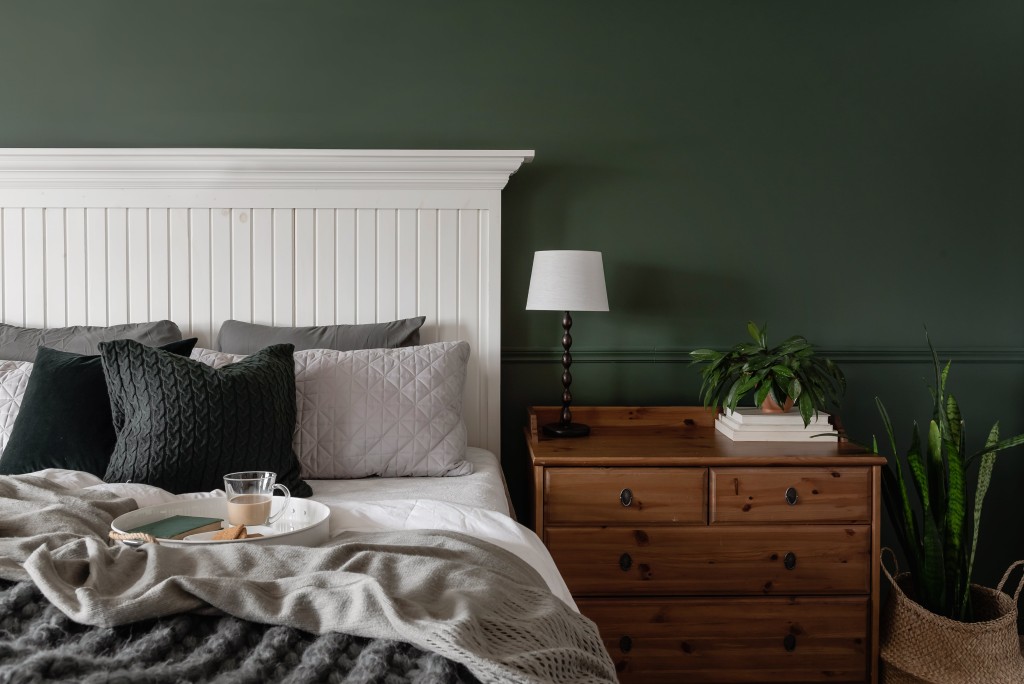
Sleep Soundly with Elite Painting
While sleeping in a freshly painted room can be risky because of the potential health hazards associated with paint fumes, there are practical steps you can take to ensure a safe environment. Choosing low-VOC or non-VOC paints, ensuring proper ventilation, and taking extra precautions for vulnerable individuals can all make a significant difference. Elite Painting, Perth’s expert painters, delivers stunning results while ensuring the health and safety of your space. giving you complete peace of mind.
Ready to transform your home? Get in touch with our team for expert advice and breathe new life into your property today.
